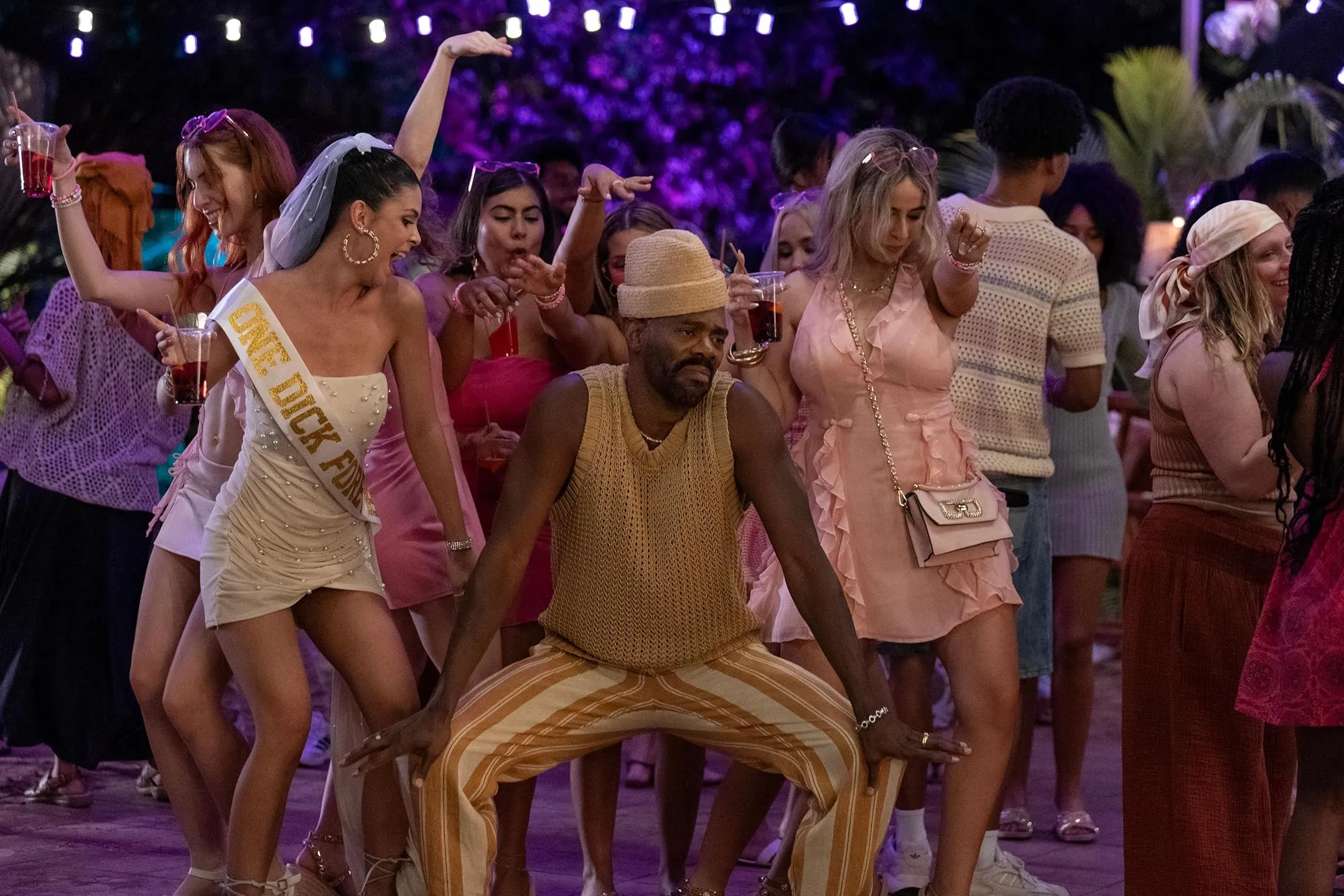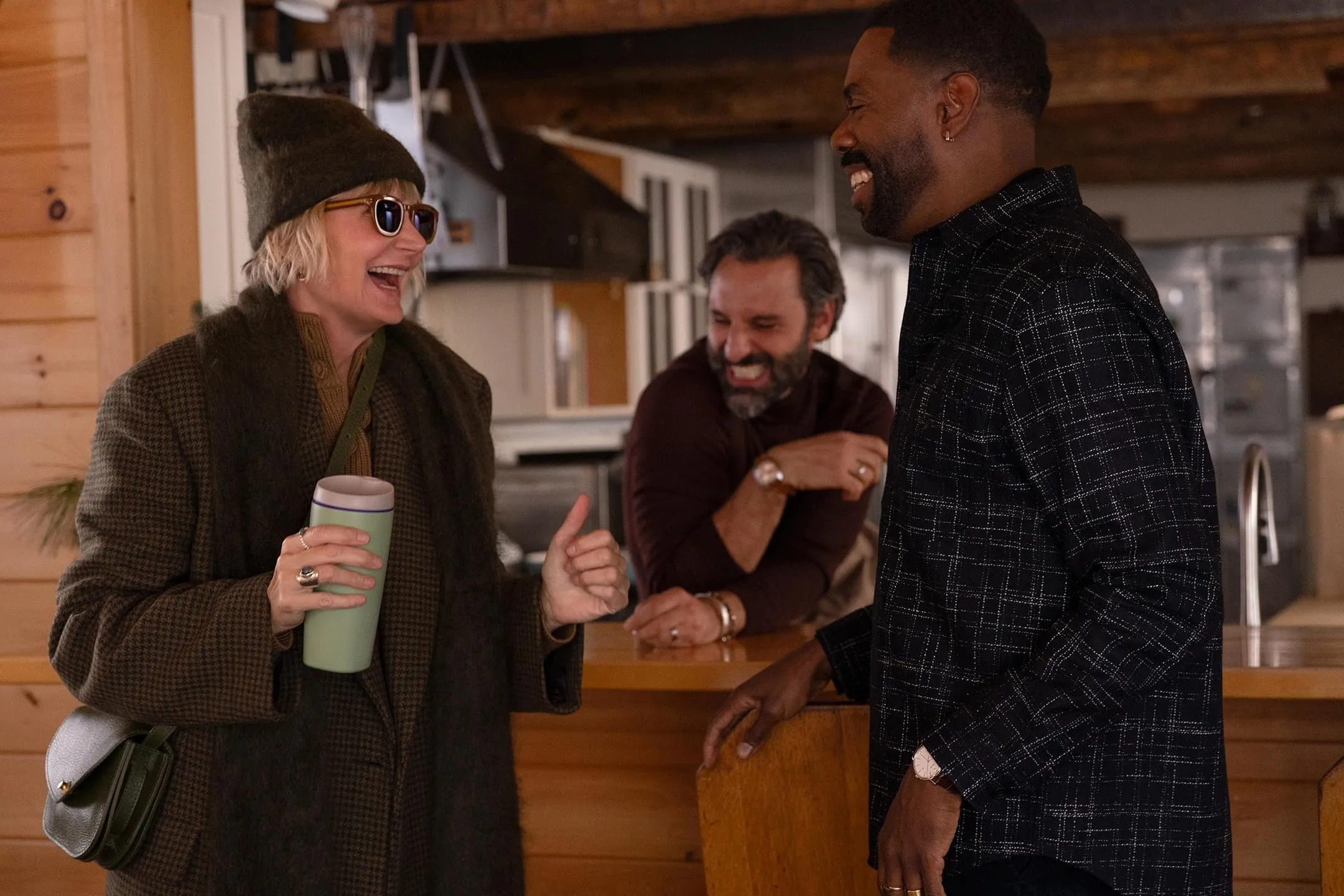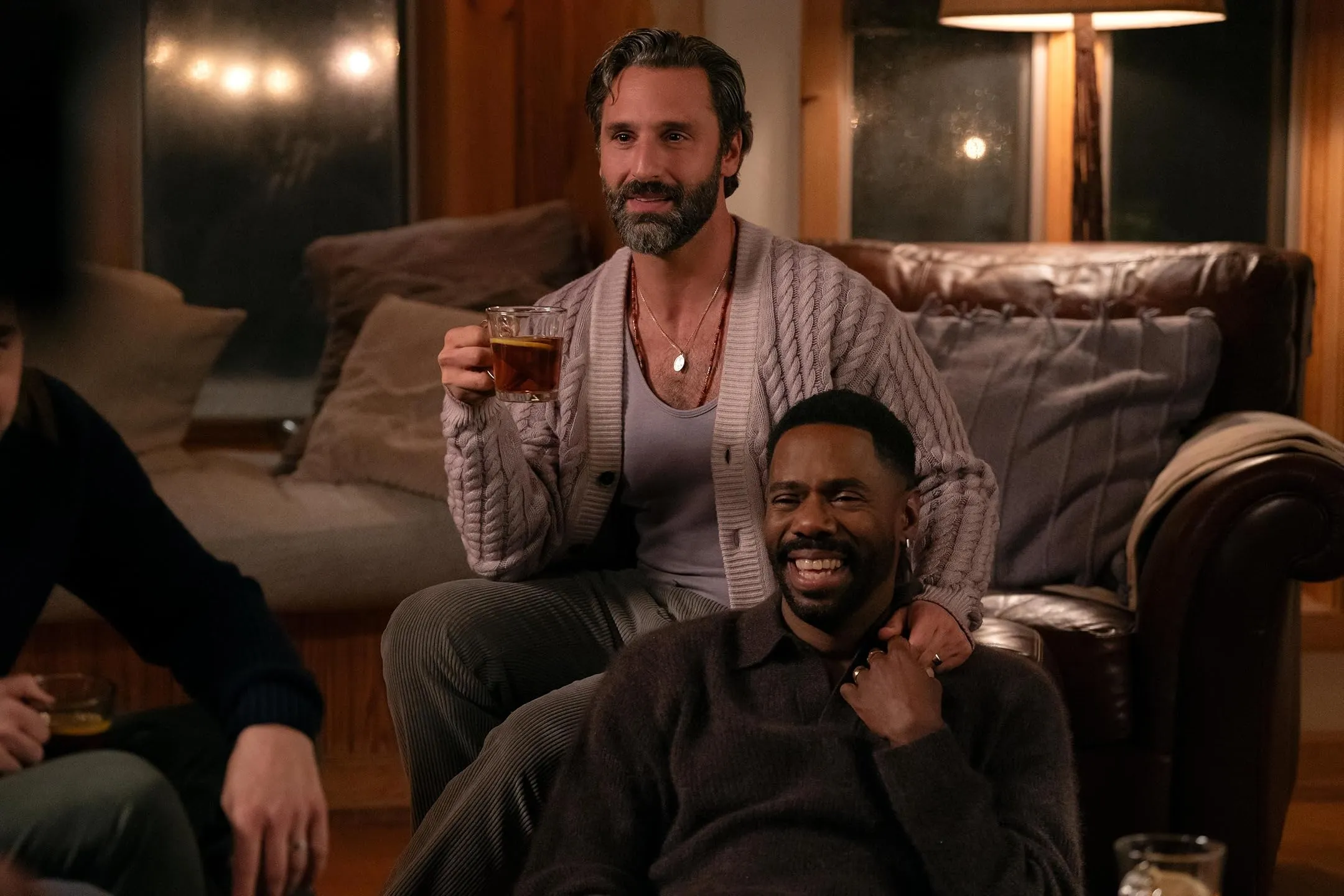Set against sunlit lakeshores, windswept mountains, and cozy winter lodges, The Four Seasons traces a year in the lives of three longstanding couples who convene for ritual vacations each spring, summer, autumn, and winter. Over eight half-hour episodes on Netflix, the series hinges on a single seismic moment—one spouse’s announcement that reshapes every relationship in the group—then follows the ripple effects as friendships and marriages are tested and renewed.
This modern retelling springs from Alan Alda’s 1981 film, yet it wears its heritage lightly, adopting the original’s gentle scrutiny of middle age while charting its own emotional terrain. At the helm are Tina Fey, Lang Fisher, and Tracey Wigfield, a trio whose combined wit and skill in character-driven comedy imbue the narrative with both warmth and an undercurrent of tension. Fey herself anchors the ensemble with crisp timing and a quietly commanding presence.
Netflix’s miniseries format offers a compact canvas: each pair of episodes corresponds to a season, using natural light, shifting color palettes, and Vivaldi’s titular concerti to underscore both time’s passage and the characters’ inner shifts. A cozy exterior gives way to moments of startling honesty, as the ritual of shared getaways becomes a mirror for midlife reckoning and the fragile architecture of long-held bonds.
A Year in Four Frames
The Four Seasons unfolds across four distinct chapters—spring, summer, autumn, winter—each delivered in a two-episode block. The shifts in light and landscape mirror the characters’ shifting loyalties and vulnerabilities. Spring’s pastel dawn welcomes hope before a sudden declaration fractures the group’s calm.
Summer blazes with excess, as a newcomer’s arrival strains familiar bonds at a luxe eco-resort. Autumn’s drifting leaves cradle nostalgia on a college campus, where memory and regret swirl. Winter’s hush wraps relationships in white, inviting both frozen tensions and tentative warmth.
As buds swell into bloom and later yield to decay before winter’s white hush, human relationships reveal their cycles of growth, tension, and stasis. Scenes of trees shedding leaves or ice forming across a frozen lake become visual poetry for emotional turning points.
Here, the ritual of annual vacations takes on near-ceremonial weight. These middle-aged friends no longer seek spring-break antics but the comfort of shared history—and the sting of unexpected change. The series honors Alan Alda’s original screenplay yet moves freely, adding queer and interracial couples and tonal shifts that speak to today’s viewers.
In a landscape hungry for gentle distractions, The Four Seasons feels like familiar comfort with an undercurrent of truth. Vivaldi’s concerti thread through each chapter, their soaring violins echoing both the characters’ fleeting elation and the fractures beneath, forging a quietly resonant experience.
Portraits in Seasonal Light
Tina Fey’s Kate and Will Forte’s Jack carve out a dance of opposites: she—a meticulous architect of every detail, he—a contented wanderer welcome to any detour. Their back-and-forth crackles with insider jokes, each barb softened by years of shared history. In spring’s first acts, Fey’s steady gaze fractures only once Jack drops the bombshell that unspools the group’s equilibrium. By summer, a late-night fireside conversation finds them tentatively repairing cracks, their banter still sharp but laced with unspoken understanding.
Colman Domingo and Marco Calvani inhabit the open-marriage couple with magnetic tension. Danny’s retreat into work, driven by an undercurrent of health concerns, meets Claude’s insistence on constant closeness. Domingo makes each brusque word ring with unspoken worry, while Calvani’s expressive flourishes turn caregiving into a grand performance. A late-fall episode—set amid golden leaves and campus echoes—sees Claude confronting Danny under an old elm tree, their embrace equal parts desperation and loyalty.
Steve Carell steers Nick through a textbook midlife rupture, his offhand cruelty tinged with soulful regret. Kerri Kenney-Silver’s Anne begins as a quietly assured wife before Nick’s declaration leaves her world unmoored. Kenney-Silver threads sorrow and simmering anger into every glance, transforming Anne from sympathetic victim into someone poised on the brink of reinvention. Carell’s Nick, meanwhile, shifts between selfish abandon—celebrated by a flashy sports car—and genuine yearning for a fresh start.
Erika Henningsen’s Ginny arrives like a gust of wind, bright-eyed and unwavering in her enthusiasm. Her presence fractures old patterns, coaxing buried resentments to the surface by day and lighting new sparks by night. Small-group scenes—the six of them spread around a lake at dawn—demonstrate how alliances fluctuate: a shared joke here, a pointed silence there.
Through these performances, the ensemble becomes a living organism, each turn of phrase and sideways glance revealing alliances that form and dissolve with the seasons. The chemistry never feels staged; it hums with the weight of decades spent in each other’s orbit.
Changing Tides of Intimacy
Friendship in The Four Seasons feels like a weathered mosaic: familiar, sturdy, yet prone to fissures when pressure builds. A single act of betrayal—Nick’s abrupt announcement—sends shockwaves through the group, forcing each character to weigh collective loyalty against private desire. Moments that once sparked laughter become loaded with unspoken tension, revealing how shared history can both comfort and ensnare.
Marriage here wears many faces. In Kate and Jack’s easy banter, complacency lies dormant beneath playful jabs. Danny and Claude’s open union turns into a crucible where care and resentment coexist. When Danny’s health flares, Claude’s fierce protectiveness flickers into frustration, capturing the fragile dance between devotion and suffocation. Each couple endures its own strain, from quiet routine to sudden upheaval, showing that commitment can be both anchor and chain.
Midlife reflection seeps into every frame. As seasons cycle—buds unfurl, leaves drift, snow blankets—the characters confront “What now?” questions. The camera lingers on empty chairs at a lakeside table, on footprints fading in fresh snow, underscoring time’s passage and the urgency it brings to sake up or let go.
Adaptation emerges in small gestures: an olive branch offered over morning coffee, an unplanned road detour that reignites old sparks. Resilience glows brightest in scenes where laughter and sorrow collide—Ginny’s wide-eyed optimism cutting through Anne’s quiet grief, or Jack’s awkward joke softening a moment of raw truth.
Wit threads through the drama like a bright ribbon. Sarcastic exchanges provide a palate-cleanser between heavier revelations, granting breathing space. Yet when laughter subsides, the quiet ache remains, ensuring that humor never masks the gravity of bonds tested by change.
Symphony in Four Movements
The Four Seasons unfolds as a quartet of vacations, each pair of episodes scoring a distinct emotional tempo. Spring erupts with a blunt announcement that fractures the group’s equilibrium, setting shockwaves through long-held bonds. Summer shifts into bright distractions—a flashy resort, a new romance—offering both escape and fresh fault lines. Autumn returns the friends to a leafy campus, where nostalgia and regret swirl beneath crisp air. Winter’s snowy retreat brings introspection and the first tentative steps toward repair.
The half-hour format carries a nimble energy, propelling scenes forward with brisk dialogue and visual flourishes. Moments of abrupt tension—Nick’s declaration, an unplanned confrontation—land like staccato notes, while quieter interludes breathe between them. Episodic hooks tease what comes next, yet recurring threads maintain a serialized continuity: a health scare here, career doubts there, each new subplot weaving into the main arc.
Action-driven beats often yield to character-focused exchanges, trusting conversation to reveal deeper shifts. A late-night lakeside charla, for instance, speaks volumes about loyalty without a single dramatic twist. Subplots—Danny’s mounting anxiety, Kate’s career choices, Anne’s evolving identity—slip in organically, adding texture rather than clutter.
Early episodes glide along on breezy camaraderie, but the back half anchors in darker revelations. That shift deepens the narrative gravity, proving that even in a seemingly light miniseries, the pace can swing from effortless buoyancy to resonant weight.
Hues and Harmonies
Frames of water and sky bleed into one another: dawn’s translucent mist over the lake gives way to sun-drenched pine needles, then shifts to the stark geometry of snow-laden pines. Each locale feels lived-in, from the rustic charm of a lakeside inn—its wood-paneled walls glowing in golden afternoon—to the eco-resort’s angular yurts draped in playful textiles.
A college quad, bathed in autumnal rust, conjures sepia-tinted nostalgia, while the ski cabin’s firelit interiors cradle characters in a snug embrace. Light itself becomes a character, shifting from the soft pastels of spring to winter’s crisp, high-contrast whiteness.
Costume choices trace emotional arcs: Kate’s tailored earth tones give way to more relaxed knits; Jack’s passed-down flannels echo his easygoing spirit. Danny’s sleek lines crackle against Claude’s vibrant scarves, underlining their tension in color alone.
Vivaldi’s concerti thread through the narrative like a living pulse, their soaring violins marking crescendos of hope and tremors of insecurity. In key scenes, silence falls—a hushed breath before revelation—making the return of strings all the more piercing. A subtle underscore of original motifs complements these classical peaks, weaving moments of fresh intimacy into the score.
Ambient textures—water lapping at docks, wind gusting through pines, wood crackling in fireplaces—anchor the viewer in each setting. Dialogue rides atop this aural tapestry, crisp in its delivery yet buoyed by careful mixing that balances banter with the world’s soft soundtrack.
Echoes of the Seasons
Questions of belonging and renewal pulse beneath every frame. As friendships age like fine wood—knotted, weathered, lined—the show taps universal longings for purpose and loyalty. Each character’s quiet yearning to begin anew or hold fast to the familiar reflects a common yearning: to feel tethered even as life shifts around us.
Comfort blooms alongside catharsis. The gentle pace and familiar faces offer a refuge, yet moments of raw revelation deliver genuine impact. Viewers seeking warm company will savor the easy banter, while those drawn to emotional honesty will linger on scenes where laughter gives way to sharp vulnerability.
Certain images lodge in memory: Nick’s confession by the lake, Ginny stepping into a hesitant circle of friends, the wind stirring fallen leaves as old bonds fracture. A scarcity of uproarious set pieces may frustrate anyone craving nonstop punchlines, and some subplots—particularly the health and caregiving thread—occasionally feel sketched rather than fully etched.
Viewers attuned to the subtleties of dramedy and explorations of midlife will find much to treasure. Those looking for a steady stream of surprises might pace their viewing week by week. At the same time, the series rewards a single-sitting immersion, its shifting moods and evolving relationships unfolding like a slow-moving concerto.
Full Credits
Directors: Shari Springer Berman, Robert Pulcini, Oz Rodriguez, Jeff Richmond, Colman Domingo, Lang Fisher
Writers: Tina Fey, Lang Fisher, Tracey Wigfield, Josh Siegal, Dylan Morgan, Vali Chandrasekaran, Matt Whitaker, John Riggi, Lisa Muse Bryant
Producers: Alan Alda, Marissa Bregman
Executive Producers: Tina Fey, Lang Fisher, Tracey Wigfield, David Miner, Eric Gurian, Jeff Richmond
Cast: Tina Fey, Steve Carell, Colman Domingo, Will Forte, Kerri Kenney-Silver, Marco Calvani, Erika Henningsen, Julia Lester, Alan Alda, Ashlyn Maddox, Jacob Buckenmyer, Taylor Ortega, Simone Recasner, Toby Edward Huss, Tommy Do, Chloe Troast, Jack Gore, Cole Tristan Murphy
The Review
The Four Seasons
The Four Seasons offers a warm, contemplative look at friendship and marriage, anchored by vivid performances and the shifting backdrop of Vivaldi’s scores. While its humor is gentle, its emotional candor resonates long after the final snowfall.
PROS
- Strong ensemble acting
- Seasonal structure underscores emotional shifts
- Striking natural and set design
- Vivaldi’s concerti as a constant motif
- Honest portrayal of middle-age dilemmas
CONS
- Limited comedic payoffs
- Some secondary arcs feel lightly sketched
- Shifts in tone can feel abrupt
- Half-hour episodes constrain depth





















































